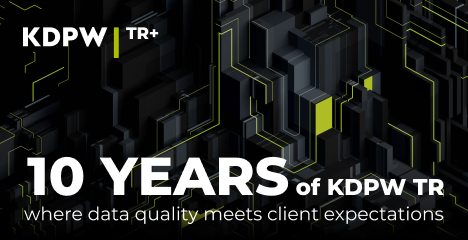For anybody who wants to grasp the transition from a traditional to a DLT-based logic in the securities-servicing area, the latest issue of Securities Finance Times offers plenty of don’t-miss reading. Launches of digital-asset divisions this year by both BNY Mellon and State Street are but two of many observations of how post trade is currently going hybrid.
Ok, 15–20 years ahead or so, we might be reaching a “new world” where asset holdings will be fully digitised – but until then, success will lie with those service providers who can best combine their handling of traditional and digitised assets.
This is the picture painted by Tilman Fechter – head of banking, funding and financing at Deutsche Börse-owned Clearstream – who is one of many interviewees in the DLT-focused latest issue of Securities Finance Times, available here.
“We believe that the winners, those who will capture most market share, will be those that can best service this hybrid state,” Tilman Fechter tells the magazine. In the humble “old world” of today, he now witnesses the appearance of actors such as collateral mobility enabler HQLA-X, who work as translators by “applying some of the advantages of the new digitised world to address the inefficiencies prevailing in securities lending and collateral transformation transactions”. (HQLA-X CEO Guido Stroemer is separately interviewed in the magazine; as is Jean-Marc Eyssautier, new CEO of LiquidShare, a provider of DLT solutions for securities issuance and processing.)
Separate assets, but unified servicing?
The issue sees editor Bob Currie explain clearly where the securities industry is currently at, based on input from managers at custodians, technology providers and others.
Over time, digitisation should be able to bring benfits such as multi-asset interoperability, real-time settlement capabilities and more liquid collateral pools to the broad range of assets. But as long as traditional and digitised assets work by very different logic, as they do today, asset managers will prefer custodians who can still unify the servicing delivery around both types. Also, a key driver to institutional-investor uptake will be that regulators can harmonise digital-asset rules into a shared logic with traditional assets. For Europe, an upcoming Markets in Crypto-assets (MICA) regulation is planned to be improving things by 2024.
Among custodians, the magazine interviews Mike Demissie of BNY Mellon, who put up a digital-asset division in February, and Ron O’Hanley, CEO of State Street, who established a dedicateed digital-assets division as recently as in June.
“Clients want exposure to digital assets, but this does not typically mean that they are looking for new service providers,” says Mike Demissie to SFT.













